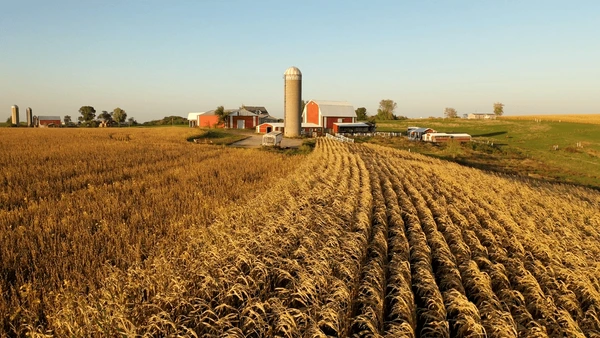Remember that old dream of ditching the city hustle for a patch of land where you can grow your own veggies and maybe raise a few chickens? Well, it’s not just a fantasy anymore. Across the United States, folks from all walks of life are turning to hobby farming as a way to reclaim a simpler, more grounded existence. I’ve seen it firsthand in my own community—my buddy Jack, a former software engineer, swapped his desk for five acres in rural Ohio a couple years back. Now he’s knee-deep in heirloom tomatoes and couldn’t be happier. But what’s driving this surge? Let’s dig into the roots of why hobby farms are sprouting up everywhere, blending nostalgia with modern needs in ways that feel both timeless and timely.
What is a Hobby Farm?
Picture a small plot of land—usually under 50 acres—where the goal isn’t to rake in big bucks but to enjoy the process of growing food, raising animals, or even tending bees. Unlike commercial operations focused on profit, hobby farms are all about personal fulfillment, sustainability, and maybe selling a bit at the local market. They’re often run part-time alongside a day job, making them accessible for beginners without deep agricultural roots. It’s that sweet spot between a backyard garden and a full-blown farm, offering a taste of rural life without the overwhelming commitment.
The Surge in Popularity: Key Statistics
Hobby farming isn’t just a fad; numbers back it up. In 2023, small family farms made up 86% of all U.S. farms, holding 41% of agricultural land, even if many operate more for passion than paychecks. Fast-forward to 2025, and family-owned farms account for a whopping 95% of the total, showing how these smaller setups are reshaping the landscape. Between 2002 and 2007, farm numbers spiked in most states, driven by “residential/lifestyle” operations that shrunk average farm sizes. It’s clear: Americans are craving this hands-on connection, especially post-pandemic when remote work opened doors to rural moves.
Reasons Behind the Boom
So why now? Life’s gotten complicated, and hobby farms offer an antidote. People are seeking control over their food, a break from screens, and a way to live lighter on the planet. It’s like hitting reset, but with fresh eggs as a bonus.
Reconnecting with Nature in a Digital World
In our always-on era, stepping outside to till soil feels revolutionary. Many start hobby farms to escape urban stress and bond with the earth—think harvesting your own carrots instead of scrolling Instagram. Jack told me it started with one raised bed; now his farm is his therapy, lowering his blood pressure one weed at a time. This trend taps into a deeper yearning for authenticity, where watching seeds sprout beats binge-watching any day.
Pursuit of Self-Sufficiency and Health Benefits
Who doesn’t love knowing exactly what’s in their meal? Hobby farms let you grow organic produce free from mystery chemicals, boosting family nutrition and cutting grocery bills. Plus, the physical work—hauling hay or chasing goats—keeps you fit without a gym membership. Emotionally, it’s a win too; studies show gardening slashes stress, and I’ve felt that calm after a day in the dirt myself. It’s empowering, turning consumers into creators in an uncertain world.
Environmental Awareness and Sustainability
With climate worries on the rise, hobby farms promote eco-friendly practices like composting and permaculture. Small-scale operations cut food miles, reducing carbon footprints compared to industrial giants. They’re a quiet rebellion against factory farming, using natural methods that heal the soil. One farmer I know in Virginia rotates crops to build biodiversity—it’s not just green, it’s gratifying.
Economic Perks and Side Income Potential
While not get-rich-quick schemes, hobby farms can supplement income through farmers’ markets or CSA shares. In tough times, that extra cash from honey or veggies adds up, and tax breaks for agricultural land sweeten the deal. But beware: profitability varies, with many viewing it as a rewarding side hustle rather than a main gig.
The Role of Remote Work and Lifestyle Shifts
The pandemic supercharged this by freeing people from office commutes. Suddenly, city dwellers could afford rural land and balance jobs with farming. Areas like Kentucky and Virginia top lists for hobby farming thanks to affordable acres and lax rules. It’s a lifestyle upgrade—imagine Zoom calls with a view of your orchard.
Pros and Cons of Starting a Hobby Farm
Every rose has its thorns, right? Hobby farming brings joys but demands sweat. Here’s a balanced look to help you decide.
Pros
- Health Boost: Fresh air, exercise, and homegrown eats improve physical and mental well-being—it’s like nature’s prescription.
- Self-Reliance: Grow your own food, reduce waste, and gain skills that last a lifetime.
- Community Ties: Connect with locals at markets; it’s a social network with dirt under the nails.
- Eco-Impact: Sustainable practices help the planet, one compost pile at a time.
- Fun Factor: There’s humor in it—like when your “easy” chickens turn into escape artists.
Cons
- Time Drain: Juggling a farm with life can feel overwhelming; weekends vanish into chores.
- Upfront Costs: Land, tools, and animals add up, even if you’re thrifty.
- Unpredictable Weather: Droughts or pests can crush crops, testing your resilience.
- Learning Curve: Mistakes happen, like overplanting zucchini and drowning in squash.
- Limited Profits: Most aren’t moneymakers; treat it as passion first.
Hobby Farms vs. Commercial Farms: A Comparison
Wondering how they stack up? This table breaks it down simply.
| Aspect | Hobby Farms | Commercial Farms |
|---|---|---|
| Size | Under 50 acres, often 5-10 | Hundreds to thousands of acres |
| Primary Goal | Personal enjoyment, sustainability | Profit and large-scale production |
| Income | Supplemental or none | Main revenue source |
| Operations | Part-time, diverse crops/animals | Full-time, specialized monoculture |
| Environmental Impact | Low, eco-friendly methods | Higher, with potential for pollution |
| Startup Cost | Moderate ($50K-$200K) | High (millions) |
Hobby farms shine for beginners seeking balance, while commercial ones demand serious investment.
Best Tools for Starting Your Hobby Farm
Ready to dive in? Gear up with essentials that make tasks easier without breaking the bank. A compact tractor tops the list for plowing and hauling—brands like John Deere offer models under $20K. Don’t skip a wheel hoe for weeding or a flame weeder to zap pests organically. For seeding, try a six-row seeder for efficiency. Hand tools like a Japanese sickle hoe and soil blockers are game-changers for small plots. Check sites like Tractor Supply or Amazon for deals, and start small to avoid overwhelm.
Where to Find Land for Your Hobby Farm
Hunting for the perfect spot? Online platforms make it straightforward. LandSearch lists thousands of small farms nationwide, filtering by state and price—average cost hovers at $55K per acre. Land.com specializes in rural properties, ideal for hobby setups. For affordability, eye North Dakota or South Dakota, where land is plentiful and cheap. Local realtors or USDA’s Farm Link Finder connect you with sellers—pro tip: visit in person to check soil and zoning.
People Also Ask
Drawing from real Google searches, here are common questions buzzing around hobby farms.
What qualifies as a hobby farm?
Typically, it’s a small agricultural setup run for fun, not full profit, with activities like gardening or livestock on modest land.
How much does it cost to start a hobby farm?
Expect $10K-$50K initially for land, tools, and basics, depending on size—cheaper in Midwest states.
Are hobby farms profitable?
Rarely as a main income, but many earn extra from sales; focus on enjoyment to avoid disappointment.
What animals are best for hobby farms?
Chickens, goats, and bees are beginner-friendly—easy to manage and provide eggs, milk, or honey.
FAQ
Why are small farms on the rise despite low profits?
They’re driven by lifestyle benefits like health and sustainability, not just money—remote work helps too.
Can I start a hobby farm in a suburban area?
Absolutely, with zoning checks; many use backyards for micro-farms, focusing on veggies or poultry.
What’s the biggest challenge for new hobby farmers?
Time management—balancing chores with life, but starting slow eases it.
How do hobby farms help the environment?
By promoting local, organic methods that reduce transport emissions and build soil health.
Is hobby farming suitable for families?
Yes, it teaches kids responsibility and nature appreciation, though it requires safety precautions.
In wrapping up, hobby farms aren’t just trending—they’re a heartfelt response to modern life’s chaos. Whether you’re inspired by Jack’s story or your own backyard dreams, this movement offers real rewards. If you’re tempted, scout land on LandHub or read more on sustainable practices at USDA’s site. Who knows? Your slice of paradise might be just a plot away.




